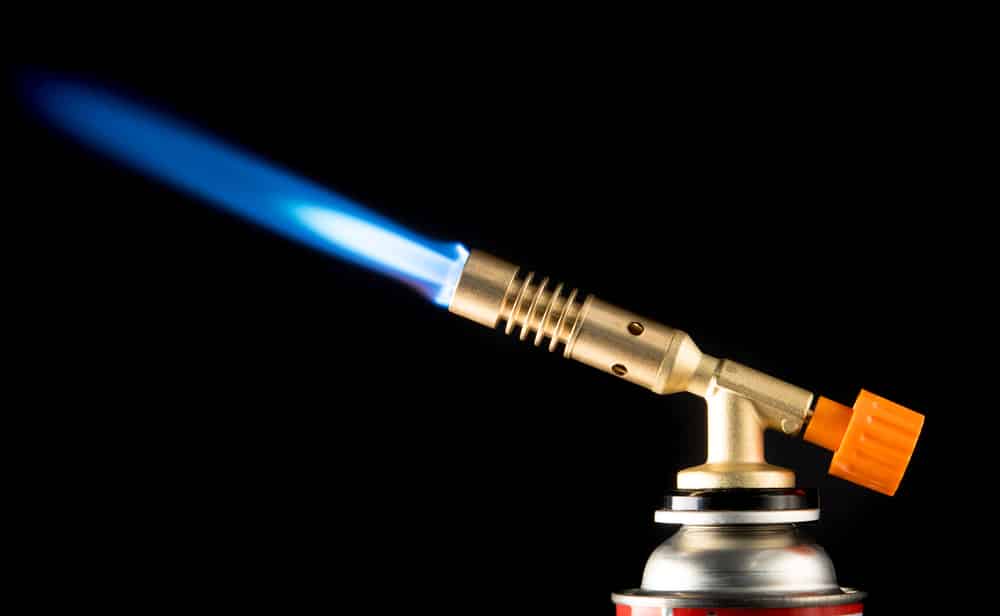
Cooking is one of the most immersive activities, but it doesn’t come easy, particularly if you are a professional chef. This is because you’ve to be particular about finishing the food, which is why the chefs opt for heat guns and blow torches.
This is because these are handheld devices that can help melt the cheese or sear the meat. However, it’s important to focus on the heat gun vs blow torch comparison because there are some significant differences in these devices.
Heat Gun vs Blow Torch
Heat Gun
As the name suggests, the heat guns are designed to blow out extremely concentrated and hot air on the food, which makes them suitable for adding brown touch to the food (for steaks and desserts). In addition to cooking, a heat gun can be used for welding the plastic and metal together, but the professional chefs have been using it for years to add a crispy touch to their food, ranging from delicate meat cuts to premium desserts and cheese.
However, using the heat gun can be a bit challenging for some people because a bit of mishandling can ruin the entire meal. For this reason, it’s only used by professional chefs; you need to have a proper understanding of the function and gain control over the gun to achieve better outcomes. Usually, a heat gun is designed to reach temperatures of over 1300-degrees Fahrenheit, making it apt for cooking premium meats without compromising on quickness.
For instance, you can sous-vide the meat in less than five minutes, depending on how much charring and browning you need. With the heat gun, the concentrated heat will be supplied to the food’s surface, making it an apt choice for people who cook thinner meat cuts. All in all, it’s a great way of adding flavor and color to the meat. In addition to meat, it can be used for melting and browning other meats, such as desserts. For instance, it’s a great choice for roasting mushrooms as it provides a precise stream of concentrated air.
The heat gun is designed as a finishing tool, which does a great job at making souffles or melting sugar for crème Brulee. However, when you use the heat gun for desserts, it’s recommended that you reduce the temperature to make sure desserts don’t burn (yes, you can adjust the temperature). The best thing about a heat gun is that it is flameless and only blows hot air. Overall, it’s an affordable tool that comes with a variable nozzle, so you can control the heating area.
Blow Torch
A blow torch is one of the most used culinary tools and can be used with butane or propane fuel cylinders. The blow torches are designed to produce hot flame, which adds a browning touch to the food. Usually, a blow torch reaches a temperature over 2610-degrees Fahrenheit, but the maximum and minimum temperature range depends on the brand and model you choose. However, the temperature range is enough to work with meats and desserts.
For instance, it does a great job of searing the meat, melting the cheese, and browning the steak surface. In addition, it is a great tool for melting and caramelizing sugar grains or when you want to the char the peppers. The blow torches are usually known as culinary torches, kitchen torches, and cooking torches, so don’t get confused. The blow torch is designed to produce a high-intensity flame, which is perfect for lighting up the grills, but you can also flame the cocktails with it.
A blow torch is one of the most convenient and intuitive kitchen tools as it has a handheld design – this design means that you can use it with one hand without compromising on the grip. It has the capacity to produce a consistent and intense flame. However, before you purchase a blow torch, make sure that it allows you to adjust the flame’s intensity and temperature because having this control is important to cooking different types of food.
It can achieve high temperatures, and if you use an advanced torch, you might be able to use it for light welding and soldering. Overall, these torches are available at affordable rates and don’t require maintenance. The only thing you’ve to be careful about is the flame because it’s intense, and if you aren’t careful, it can result in fire. Last but not least, you have to connect a high-pressure fuel cylinder for the flame to be consistent.